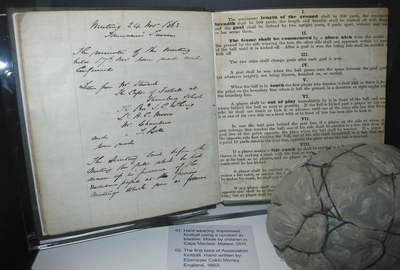
In the modern game, football’s rules and regulations are generally just accepted. In fact, they’re taken for granted to such an extent that when something new is introduced, such as the Video Assistant Referee, for example, it causes uproar for the game’s supporters.
Yet where did these original rules come from, especially with regards to dimensions for marking on the pitch?
Why is the six yard box six yards from the goal? Why is the eighteen yard box where it is? Why do players have to stand ten yards away for a set-piece?
As with so many things, it’s not necessarily easy to get to the bottom of the questions. Trying to do so takes you on a somewhat fascinating journey, though.
We’ve covered football pitch sizes and football pitch markings in other guides, here we are interested in why the modern football pitch measurements are the way they are.
The Origins of Measurements
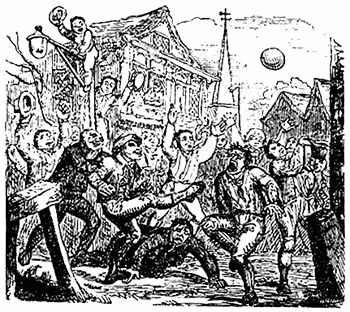
We’ve written elsewhere on the site about the origins of the markings that are on a football pitch. This article is specifically looking at the distances of various things around the pitch. In order to understand how they came about we need to travel back to the middle of the 19th century in England, when everything was measures in imperial.
Imperial units were measured in miles, feet and inches, with the following being a useful guide for those in the modern day more used to measuring in metric:
- 1 foot = 12 inches
- 2.5 centimetres ≈ 1 inch
- 30 centimetres ≈ 1 foot
- 1.5 kilometres ≈ 1 mile
You can see, then, that the relationship between imperial measurements and the metric system isn’t exactly easy to define. There is a lot of ‘roughly’ involved when discussing the difference between the two and in the middle of the nineteenth century it wasn’t really as simple to be precise as it is in the modern day.
Pitches needed to be measured out, with decisions made about where things would be that wold be simple enough for a normal man to measure out without needing to employ the use of measuring devices. For that reason, round numbers of yards and feet were what were originally used to measure out the various distances of a football pitch.
If you transport yourself back to a time when the official Laws Of The Game were being created, you’ll find that everything was measured out in nice, round numbers. The radius of the centre circle in modern money is 9.15 metres, which seems weirdly precise. Yet when you head back to the 19th century you’ll find that 9.15 metres is about 10 yards.
That sense of nice, round numbers continues elsewhere on the football pitch. The distance between one goal post and another, for example, is 8 yards, or 24 feet. The height of a goal is 8 feet. That means that a goal is three times wider than it is high. Here are some other exact measurements:
- Radius of corner flag arc = 1 yard
- Width of penalty area = 44 yards
- ‘D’ on penalty area = circle with penalty spot at centre with radius of 10 yards (not added until 1937)
- Distance of penalty spot from goal line = 12 yards
Ok. But Why These Distances?
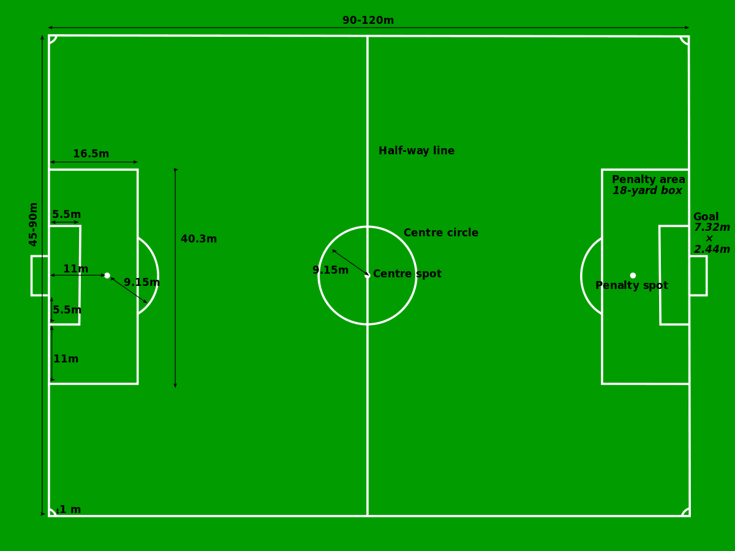
Knowing all of these things is all well and good, but it doesn’t really explain why the measurements are what they are. The reality is that a definitive answer to that particular question is much more difficult to find than you might think. After all, it’s not as though those creating the rules for football sat down and thought ‘we really should explain our thinking here’.
It isn’t helped by the fact that in the modern day the International Football Association Board says that football pitches may be ‘anywhere from 50 to 100 yards in width and 100 to 130 yards in length’. Individual leagues can then add their own specifications, such as the Bundesliga’s decision to say that they must be 105 metres long (115 yards) and 68 metres wide (74 yards), with some allowances.
Ok, so why are the measurements what they are? For that, it’s helpful to look at cricket. Whilst there is no major relationship between football and cricket in the same way that there is between football and rugby, cricket is a much older game than football. As a result, many of the early football matches actually took place on pre-existing cricket pitches.
It is here that we start to see some interesting crossovers. The penalty spot was established as being 12 yards from the goal line, so where did that measurement come from? Well, the small rectangle inside the area is the 6 yard box and that is 6 yards out from the goal and it begins at 6 yards either side of the goal posts. Double the distance takes us to 12 yards.
Add another 6 yards on and you’ve got 18 yards, which is the distance from the goal line that the edge of the area runs. The area also starts 18 yards from either post, which gives us the rectangular penalty area. Each of these measurements, then, is based around some multiple of 6 yards. Which still doesn’t explain why that measurement was used…
Where Does Cricket Come In?
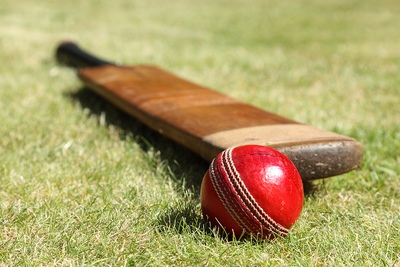 18 yards plus 18 yards plus the 8 yards that is the width of the goal adds up to 44 yards. That is precisely double the length of a cricket pitch, which is 22 yards. That’s all well and good, of course, but what’s it got to do with the price of fish? Well, 22 yards was an historic measurement used in Tudor England known as a chain.
18 yards plus 18 yards plus the 8 yards that is the width of the goal adds up to 44 yards. That is precisely double the length of a cricket pitch, which is 22 yards. That’s all well and good, of course, but what’s it got to do with the price of fish? Well, 22 yards was an historic measurement used in Tudor England known as a chain.
A chain was a standard measurement of land, with many farmers and surveyors still using it as a way of measuring land as recently as the 1950s. As an example, one acre was the equivalent of 10 square chains. The fact that a chain was a popular number will have made it an easy choice for people designing a football pitch as groundsmen will have liked it.
The next thing to note that fits in with all of this is the fact that when the D was added to the penalty area in 1937 it was decided that it would have an arc from a circle that would have a radius of 10 yards, with the circle being centred on the penalty spot. This would ensure that all players are at least 10 yards from the penalty spot.
Again, that all seems a little hard to follow and irrelevant, but this is when you need to remember that the penalty spot has already been established as being 12 yards from the goal line. The distance from the goal line to the tip of the D would now measure out at….22 yards. Once again that old Tudor measurement was brought into play.
Unanswered Questions
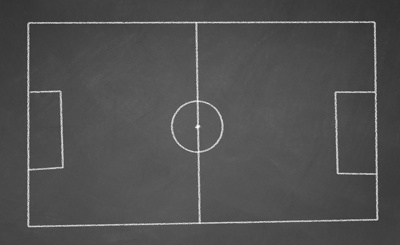 There are still a number of unanswered questions in amongst all of this and, sadly, they’ll likely forever remain so. As mentioned, it never occurred to those creating the rules and picking the distances to make a note of their workings-out when they were creating the rules for football clubs. The likelihood is that the entire thing came down to ease.
There are still a number of unanswered questions in amongst all of this and, sadly, they’ll likely forever remain so. As mentioned, it never occurred to those creating the rules and picking the distances to make a note of their workings-out when they were creating the rules for football clubs. The likelihood is that the entire thing came down to ease.
When the rules were being created, those doing the creating will have had to have thought about the following:
- If fouled, the attacking team will be given the advantage
- The defensive team will want to stop this advantage being too much of a punishment
- Something will need to happen to stop them simply standing in front of the ball
- The match referee will need to keep the defensive team from encroaching the free-kick
- Moving the defenders away from the attackers is key
- Using strides to determine a length would be easy enough
It’s more than likely, therefore, that two things combined to mean that 10 yards was chosen as the distance between players and ball for free-kicks: necessity and convenience. As a side-note, it’s worth remembering that defensive players must also be at least 10 yards away from the ball at the corner flag when a corner kick is being taken.
It seems as though the key numbers in football were 6, 8, 10 and 12 when it comes to deciding where lines should be and players should be in relation to each other. There is no definitive way to explain why it was that those lengths were chosen, we just know that they were and that the continued to be used on football to this day.
